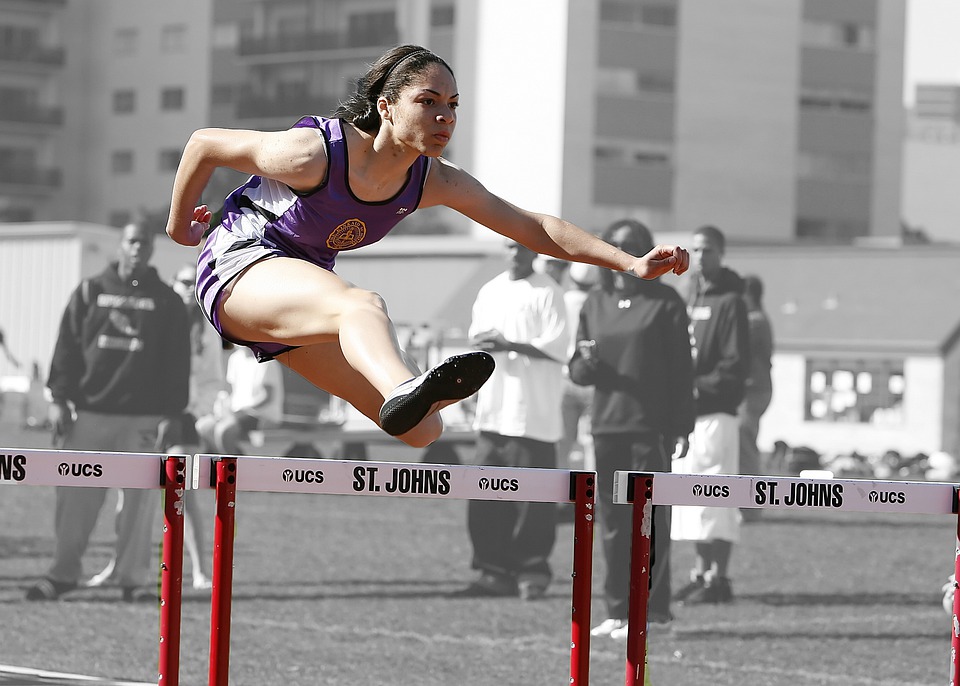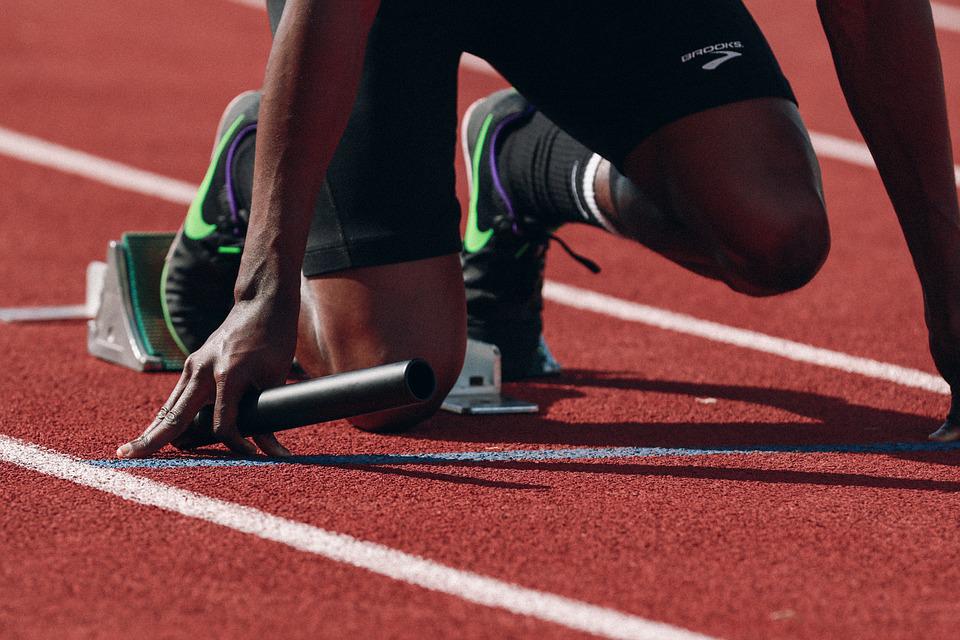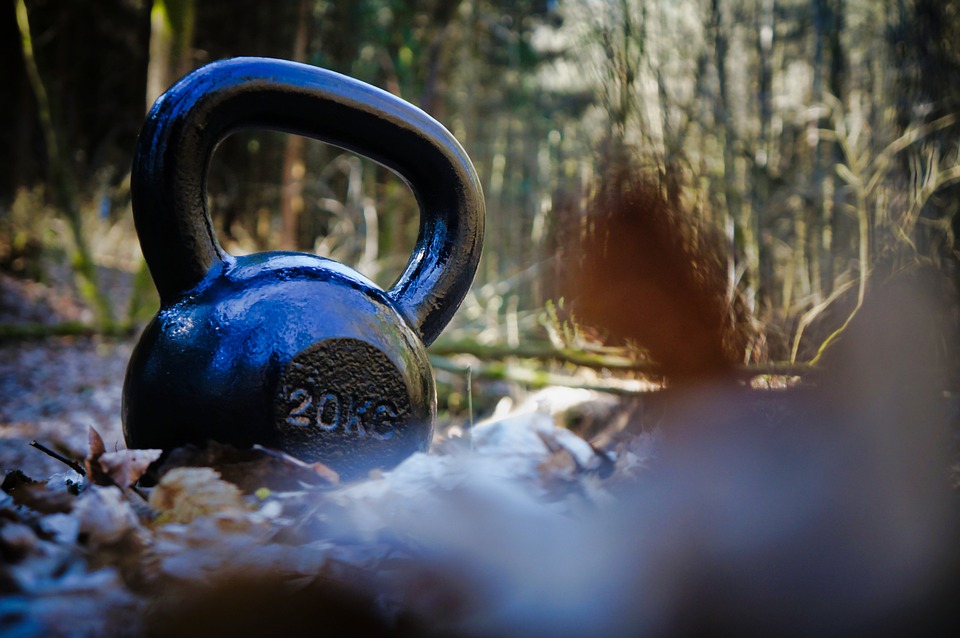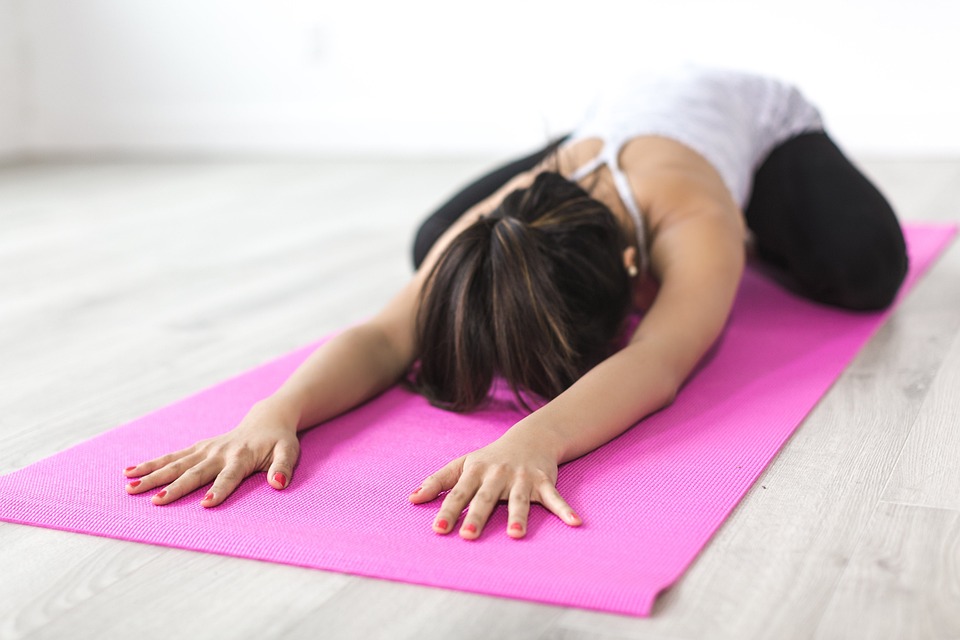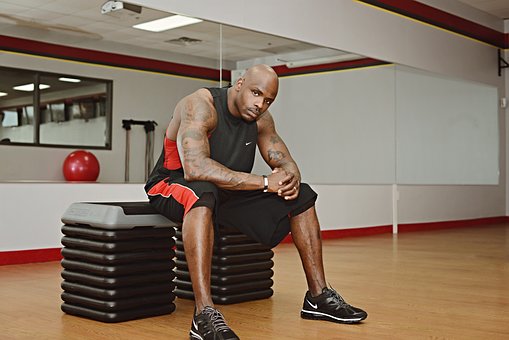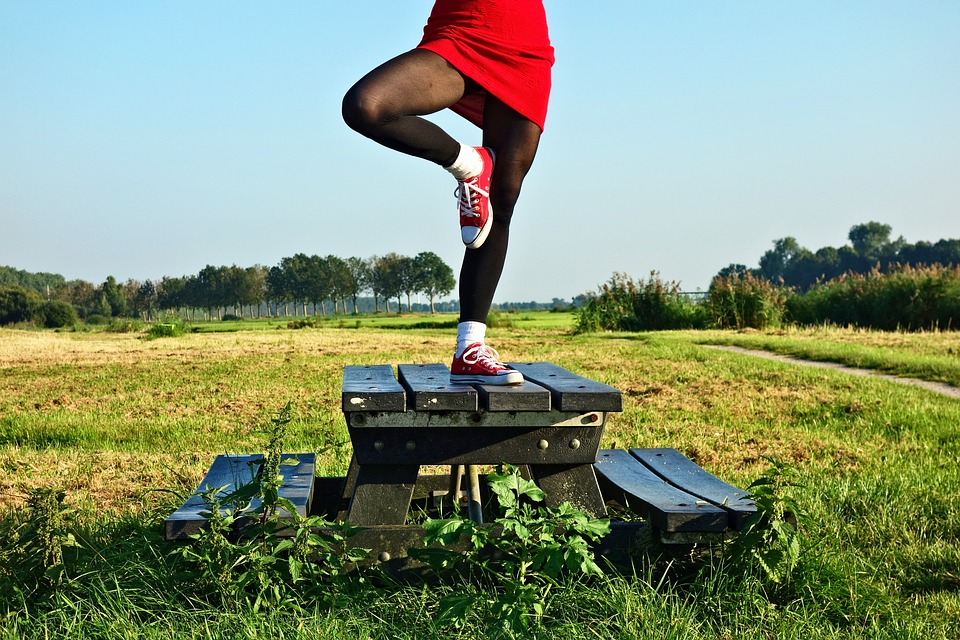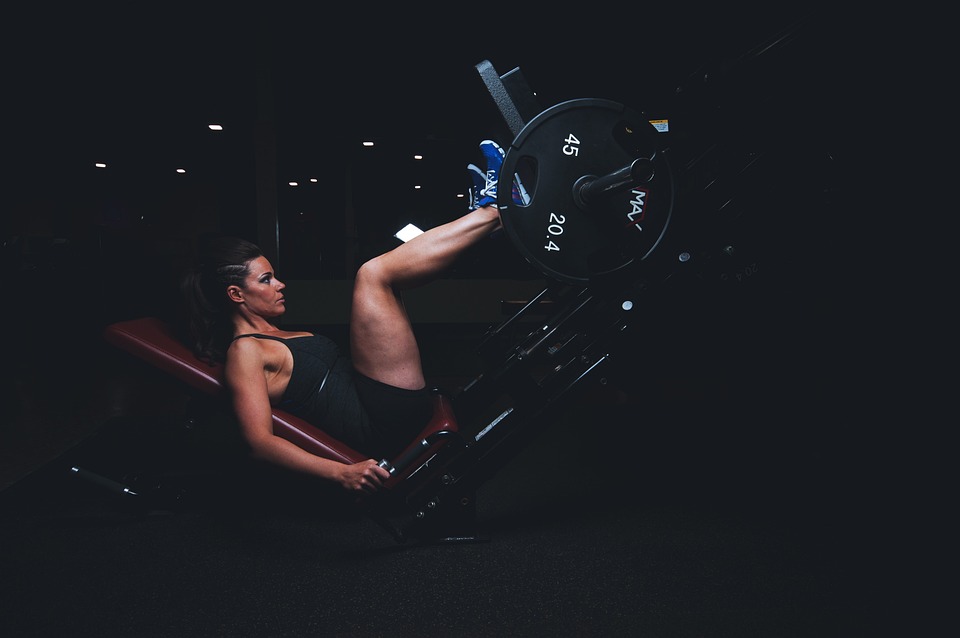
Here are six common exercise injuries and the expert-approved strategies to handle them. If you hear your body talking, back off with these strategies.
- Stress Fractures
Bruises that occur deep within the tissue and bone are called micro fractures. These often happen in the feet, pelvis, or lower leg bones. Symptoms include pain that worsens when pressing on the area, single-leg hopping or running.
Stress fractures occur when a bone is subject to more stress than it can handle, usually from high impact activities such as running or plyometrics, that are increased too quickly.
Don’t pump the brakes too hard or you may end up with a full-on break instead of just a stress fracture. According to Julie Khan, P.T., D.P.T., it’s important to see a sports medicine physician who specializes in stress fractures to determine why you got a stress fracture in the first place. He or she can perform blood tests to look at hormone, calcium, and vitamin D levels to ensure these blood values are normal. In the meantime, focus on low-impact activities such as cycling, swimming, running in the pool, and strength training.
- Patellofemoral Pain Syndrome
Patellofemoral pain syndrome (PFPS), also known as ‘runner’s knee’, is a condition in which the kneecap (patella) rubs on the thighbone (femur). Common symptoms include pain at the front of the knee, which can be aggravated by activities such as going downstairs, squatting, or exercising. Melanie Strassberg, a physical therapist at Professional Physical Therapy in Mamaroneck, New York, says that PFPS is a relatively common condition.
The most common cause of kneecap pain is muscle and strength imbalances in the quads and hips, as well as excessive tightness in the connective tissues surrounding the knee, Strassberg says. It is most common in women and young adults.
You should talk to a sports physical therapist if you’re experiencing runner’s knee, because continued running can lead to worsened symptoms and damage to the cartilage under your kneecap. Some good exercises to help with this are lateral walks, glute bridges, side-plank clams, and front planks. If you’re experiencing pain, you should switch to other forms of cardio like cycling, swimming, or elliptical training.
- Achilles Tendonitis
The Achilles tendon is the strongest and thickest tendon in the body. It is also frequently injured,” says Elise H. Weiss, M.D., physiatrist, and founder of Weiss Wellness in New York City. Acute injuries can range from mild damage of the tendon to a complete rupture, which requires surgical repair. The pain is often felt at the heel and back of the ankle, which can feel tight or swollen. Discomfort may decrease a bit as the area loosens, making it tempting to continue to work out through the pain.
The reason this occurs is because “Achilles injuries tend to happen when too much force is placed on the tendon. This is most often seen in people who have weak calf muscles. According to Weiss, men are more likely to experience this type of injury than women.
Slow down: Push through the pain, and Achilles injuries can turn into chronic degeneration, called Achilles tendinosis, or a complete tear of the tendon, requiring surgical reattachment, says Weiss. Physical therapy is a mainstay of treatment, and often includes eccentric exercises of the ankle, foot, and knee. Weiss advises cross-training with cycling over swimming. “When you first return to running [wait until you have zero pain], reduce your stride length, avoid speed workouts, and stay on flat surfaces,” Weiss says, explaining that landing with your forefoot can place more stress on the Achilles tendon. (You may want to ease into a mid or rearfoot landing pattern until the injury starts to feel better.)
- Hip Pain
Endurance athletes often suffer from hip pain due to various conditions such as hip impingement, gluteal tendinitis, iliotibial band syndrome, or tendinitis, tears, and stress fractures in the hip, according to Khan.
Hip pain is often the result of decreased core and gluteal stability, increased exercise intensity and duration, or how your bones sit in their joints. Sports physical therapists can help determine the source of the pain and why you are having the pain.
Stress on your tendons can cause new injuries and pain. Your hips are the foundation of everything your body does and pain in this area can easily affect your alignment and cause new injuries. There is not a lot of blood flow to the tendons in your hips, so they will not heal quickly if you continue to stress them with exercise.
You should avoid any movements that cause pain and talk to a specialist about ways to improve pelvic stability by training your core and glutes. Exercises such as bridges, lateral walks, pain-free lunges and squats, and single-limb balances are key to promoting core and hip strength, Khan says.
- Hamstring Strains
While tears are relatively uncommon, hamstring strains which cause sudden pain or spasms in the upper leg or back, can range from microscopic to a complete detachment. These tears require swift doctor intervention and surgery—and are accompanied by intense bruising and swelling.
The most common cause of muscle cramps is an imbalance between the hamstrings, quads, and glutes. However, a weak core or not properly warming up before exercise can also contribute. Additionally, sitting all day can lead to hamstring tightness.
Slow down: “Hamstring injuries are well-known for becoming long-term problems,” Weiss says. Until the pain goes away, or unless directed otherwise by your PT, stick with cross-training activities that don’t put strain on the legs. Think upper-body exercises. Once the pain goes away, you can start doing things again gradually, like cycling and water jogging.
Assuming you’re speaking about post-injury, before returning to regular workouts it’s best to focus on strengthening hamstrings and glutes through exercises like squats, Romanian deadlifts, and hip thrusts. Use light weights and focus on slowing the lowering phase to prevent future injuries.
- Lower Back Pain
Low back pain is a complaint that is common among athletes and people who do not exercise regularly. It can be localized to one spot or radiate into the buttocks and down the leg. Low back pain can be caused by muscular strains, slipped vertebral discs, or nerve impingement.
The reason for low back pain is often weak core muscles, incorrect movement patterns, and overworking the muscles that support and stabilize the pelvis and spine.
Don’t ignore back pain that sticks around – it could turn into full-fledged chronic pain. See a physical therapist to learn exercises that can help, depending on the cause of your pain.
Maintaining Your Fitness Base
Athletes who are injured often worry about losing fitness during down time. It is a fact that you will lose some fitness when you stop exercise, but if you want to maintain some fitness, there are a few ways to stay active.
If you have to change or reduce your exercise for a few months, you can still stay fit. To do this, you need to exercise at 70% of your VO2 max at least once a week.
Before you resume exercising after an injury, you should get the approval of your treating physician or therapist. Follow their recommendations about when you can resume exercise, how much to do, and what type of exercise is best.
Even if you can’t move one of your body parts, you can usually find other ways to stay fit. This may require some creativity and the willingness to try new things, but most athletes find that it is possible to train even while injured.
It is essential to keep a positive outlook and stay active to the best of your abilities until your injury is healed. The following are some ways to continue working out while recovering from four common injuries.
Ankle and Foot Injuries
If you have an injury to your ankle or foot, there are still many exercises you can do. Talk to your doctor to see if it’s okay for you to do things like using a rowing machine, a stationary bike with one leg, or swimming. Find other exercises you can do that don’t put pressure on your feet and spend 30 to 60 minutes doing them about three times a week.
Circuit training is also a great choice for exercising through injuries. Here is one sample workout to try in your local gym:
- Perform the following circuit workout Monday, Wednesday, and Friday.
- Perform each exercise for 30 to 60 seconds—allow 15 seconds of rest between stations
- Complete the entire circuit three to four times
- Warm up thoroughly before exercise
- Leg Extension Machine
- Chest Press
- Lat Pulldown
- Overhead Press
- Seated Cable Rows
- Incline Push-Up
- Ab ‘Bicycle’ Crunches
- Hanging Leg Raise
Leg and Knee Injuries
When you have a leg or knee injury, it can be tough to continue being an athlete. Most endurance exercises require you to move your knees up and down, so it can be hard to find new ways to workout. You could try one-legged cycling, kayaking, or using an upper-body ergometer (handcycle). If you’re able to swim, you can use a pull buoy so you don’t kick your legs.
Here are two circuit training routines to try:
Circuit 1:
- Perform this workout Monday, Wednesday, and Friday.
- Perform each exercise for 30 to 60 seconds—allow 15 seconds of rest between stations
- Complete the entire circuit three to four times
- Warm up thoroughly before exercise
- Pull-Up or Assisted Pull-Up
- Chest Press
- Lat Pulldown
- Overhead Press
Circuit 2:
- Perform this workout on Tuesday, Thursday, and Saturday.
- Perform each exercise for 30 to 60 seconds—allow 15 seconds of rest between stations
- Complete the entire circuit three to four times
- Warm up thoroughly before exercise
- Seated Russian Twist
- Ab Crunch
- V-Sit ab exercise
Elbow and Shoulder Injuries
If you have a shoulder or any other kind of upper body injury, there are still many cardio exercises you can do. Examples include walking, stair climbing, stationary (hands-free) cycling, and using an elliptical trainer.
You should try circuit training 4-5 times a week to maintain strength in your uninjured muscles and joints.
- Perform each exercise for 30 to 60 seconds, unless otherwise noted—allow 15 seconds of rest between stations
- Complete the entire circuit three to four times
- Warm up thoroughly before exercise
- Stationary cycling for two minutes at a moderate pace and two minutes at a higher intensity
- Leg Press
- Elliptical trainer for two minutes at a moderate pace and two minutes at a higher intensity
- Ab Crunch
- Walking Lunge
- Low Back Extensions
- Treadmill walking for two minutes at a moderate pace and two minutes at a higher intensity (or incline)
- Wall Sit
Low Back Injuries
Before beginning any alternative activities, it is important to speak with your doctor about your back injury and any exercise limitations you may have.
Being physically active by walking, swimming, or recumbent cycling is generally safe for those who suffer from low back pain, and will also help you maintain your cardiovascular fitness as you recover.
Before attempting the following circuit, be sure to get approval from your doctor or physical therapist.
- Perform the following circuit workout Monday, Wednesday, and Friday.
- Perform each exercise for 30 to 60 seconds—allow 15 seconds of rest between stations
- Complete the entire circuit three to four times
- Warm up thoroughly before exercise
- Complete 30 to 60 minutes of non-weight bearing cardio on Tuesday, Thursday, and Saturday.
- Chest Press
- Lat Pulldown
- Overhead Press
- Leg Extension Machine
- Wall Sit

